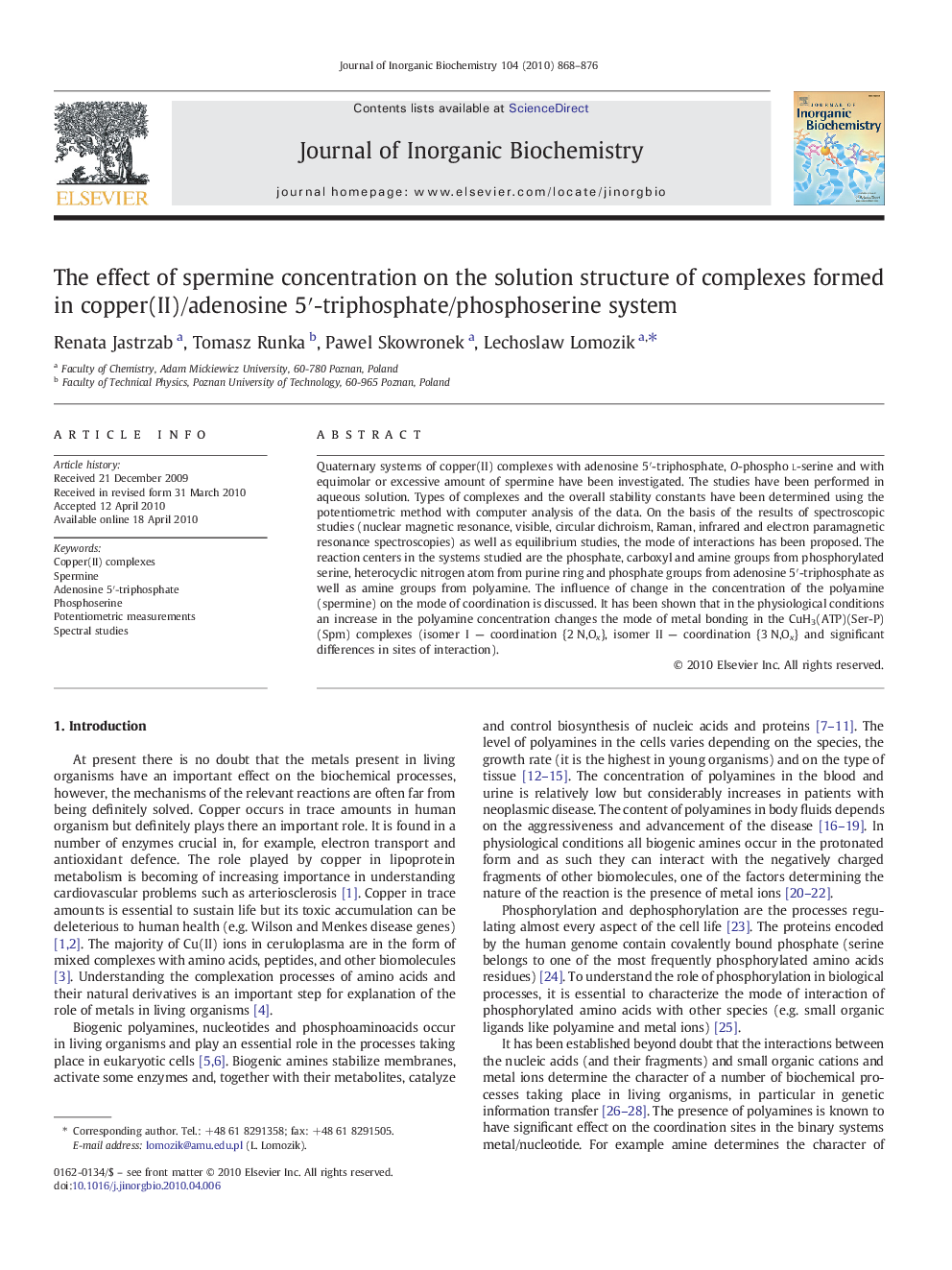| Article ID | Journal | Published Year | Pages | File Type |
|---|---|---|---|---|
| 1316625 | Journal of Inorganic Biochemistry | 2010 | 9 Pages |
Quaternary systems of copper(II) complexes with adenosine 5′-triphosphate, O-phospho l-serine and with equimolar or excessive amount of spermine have been investigated. The studies have been performed in aqueous solution. Types of complexes and the overall stability constants have been determined using the potentiometric method with computer analysis of the data. On the basis of the results of spectroscopic studies (nuclear magnetic resonance, visible, circular dichroism, Raman, infrared and electron paramagnetic resonance spectroscopies) as well as equilibrium studies, the mode of interactions has been proposed. The reaction centers in the systems studied are the phosphate, carboxyl and amine groups from phosphorylated serine, heterocyclic nitrogen atom from purine ring and phosphate groups from adenosine 5′-triphosphate as well as amine groups from polyamine. The influence of change in the concentration of the polyamine (spermine) on the mode of coordination is discussed. It has been shown that in the physiological conditions an increase in the polyamine concentration changes the mode of metal bonding in the CuH3(ATP)(Ser-P)(Spm) complexes (isomer I — coordination {2 N,Ox}, isomer II — coordination {3 N,Ox} and significant differences in sites of interaction).
Graphical abstractChanges in the concentration of spermine in the Cu/ATP/Ser-P/Spm system led to substantial rearrangement of ligands (similar to the trigger effect) and differences in coordination sites in CuH3(ATP)(Ser-P)(Spm) complexes which dominate at the physiological pH. Such changes are not observed at pH below and above the physiological level.Figure optionsDownload full-size imageDownload as PowerPoint slide
